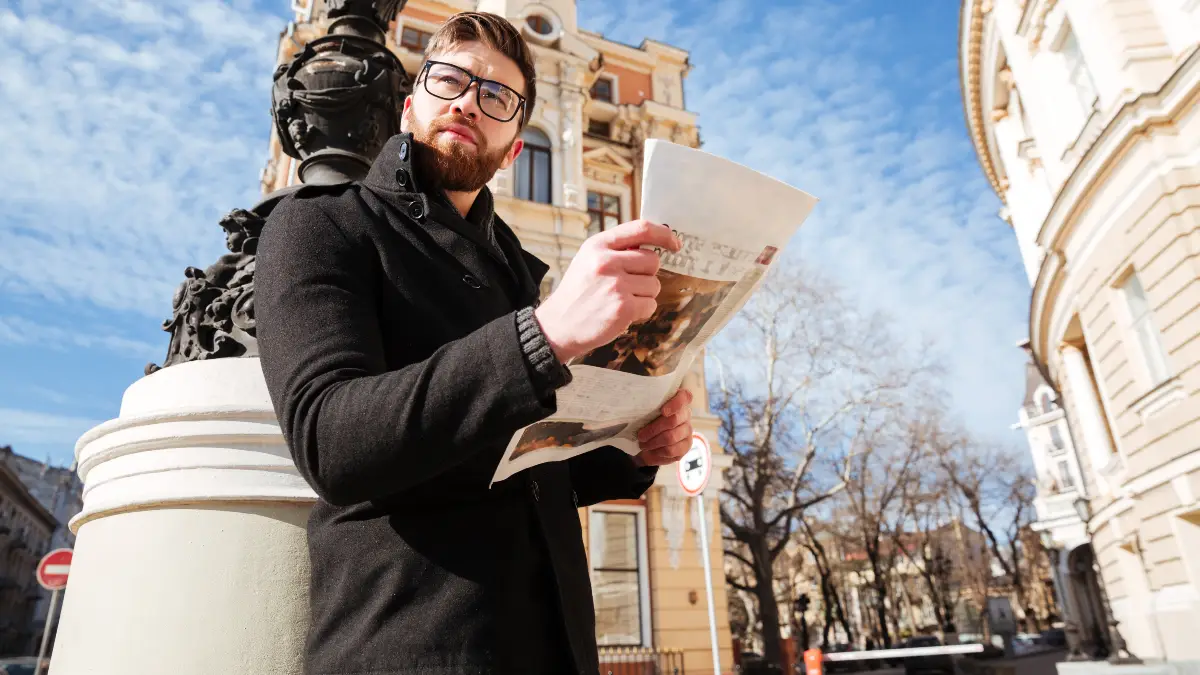The postcard lied. That perfect shot of the Trevi Fountain fails to capture the suffocating reality just outside the frame: a sea of selfie sticks and simmering frustration.
For years, a trip to Europe’s grand capitals was the pinnacle of luxury travel, but the experience has soured. The frantic rush through crowded landmarks has left discerning travelers asking a simple question: is this all there is? A quiet revolution is answering with a definitive no.
An influential group of travelers is now trading the chaos of the metropolis for the calm of the countryside, discovering that true luxury isn’t found in the most famous places, but in the most authentic ones. This is the story of that great escape.
The New Affluent Traveler: A Psychographic and Behavioral Analysis

The exodus from saturated legacy markets is not merely a reaction to negative “push” factors; it is equally driven by the powerful “pull” of a new travel ethos.
A detailed psychographic and behavioral analysis of the affluent consumer reveals a fundamental redefinition of luxury. This shift is creating a new geography of desire, where value is measured not in opulence but in authenticity, tranquility, and connection.
Understanding this consumer is critical for any destination or operator seeking to capture this high-value market segment.
The New Lexicon of Luxury: From Seeing to Being
The core philosophy driving this market shift is “Townsizing”—the intentional choice of smaller-scale destinations to achieve a higher quality of experience. This is not a budget-driven decision but a profound re-evaluation of value.
The ultimate luxury is no longer the passive consumption of globally recognized icons, a “box-ticking exercise” to prove one has been somewhere.
Instead, it is the active, immersive participation in the life of a specific and unique place. The priority has shifted from seeing to being.
This new lexicon of luxury is defined by a desire for authenticity, tranquility, and a genuine sense of place.
Travelers are actively seeking the “laid-back vibes of small towns packed with comforting nostalgia and a leisurely pace”.
The goal is to downsize the scale of the vacation—swapping a sprawling metropolis for a remote village—in order to upsize the potential for self-care, personal enrichment, and genuine human connection. This ethos prioritizes collecting experiences over collecting sights.
Analyzing the Megatrends: The Drivers of the New Geography of Desire

Here’s a simplified breakdown of the luxury travel trends, often leading to Townsizing (choosing smaller towns over big cities), rewritten for a general audience blog:
Why the Rich are Ditching Big Cities for Small Towns: The New Luxury Travel Trends
The world of luxury travel is changing. It’s not just about staying in a five-star hotel anymore; it’s about how you feel and what you experience. This shift is making smaller towns the hot new destination for wealthy travelers.
Here are the four big reasons why:
1. The Search for Calm: From FOMO to JOMO
For years, people felt the Fear of Missing Out (FOMO), pushing them to rush through famous sights (checklist tourism). Now, the ultimate status symbol is the ability to disconnect.
- The Big Switch: Travelers are embracing the Joy of Missing Out (JOMO). They want to slow down, relax, and completely unplug from their phones and emails.
- Small Town Appeal: Small towns offer natural quiet and a slower pace of life, making them the perfect escape from the always-on, hyper-connected world. They want to be fully present, letting their travel agents handle all the logistics.
2. Truly Unique Experiences: Beyond the Standard Tour
Generic, fancy service isn’t enough anymore. Wealthy travelers want trips that are completely unique and personal—journeys that feel like they were designed just for them.
- Custom-Made: They’re looking for one-of-a-kind moments, like a private truffle-hunting trip or a bespoke tea ceremony, instead of a crowded city bus tour.
- The Takeaway: They want to “carve out their own travel traditions,” meaning they want special memories no one else has.
3. Wellness as the Main Event: Getting Healthy on Holiday
Wellness used to mean adding a quick spa treatment to a trip. Now, the entire vacation is focused on health—mind, body, and spirit.
- Holistic Health: This integrated approach means fitness, nutrition, and mindfulness are core parts of the travel itinerary.
- Small Town Appeal: Smaller towns usually have easy access to nature—perfect for hiking, cycling, and generally being outdoors. They act as natural wellness retreats, making it easy to restore health and feel better.
4. Avoiding Crowds: Say Hello to Coolcationing
Getting away from large crowds is now a primary reason for choosing a destination.
- Shoulder Seasons: Many travelers are choosing to go during non-peak times (like spring or fall, known as the “shoulder seasons”) just to avoid the summer masses.
- “Coolcationing”: This is a new trend where people skip the hot, crowded summer spots (like the Mediterranean) and head to places with cooler climates and open spaces, such as Scandinavia, Scotland, or the Alps.
This desire to escape the masses is making the entire world a competitive option for luxury travel, moving the spotlight away from only the traditional, well-known destinations.
The Cultural and Structural Enablers
Beyond individual psychographics, powerful cultural narratives and structural economic shifts are enabling and accelerating the Townsizing trend.
A key cultural driver is the “Nancy Meyers” effect, an aesthetic of idyllic, charming small-town life popularized by films and television shows. This is a significant demand signal, particularly from younger affluent cohorts.
Travel trends report from Priceline found that Millennial and Gen Z travelers are 89% more likely than average to seek a vacation that offers a “Nancy Meyers lifestyle vibe” and 67% more likely to view a holiday as an opportunity to “live out their small-town fantasies”.
This reflects a deep-seated desire for a perceived simpler, more authentic, and more aesthetically coherent way of life—the very promise that small-town destinations fulfill.
This phenomenon demonstrates a critical convergence of generational values and economic power.
While the aesthetic may be most pronounced among younger demographics, the underlying values it represents—authenticity, community, and an anti-crowd sentiment—are identical to the values now sought by established, older luxury travelers who are fleeing overtourism.
What might have begun as a youth-driven cultural trend has merged with a broader, demographically-agnostic market correction. This convergence creates a single, powerful demand signal.
A destination that successfully markets itself on tranquility and authenticity can capture both the emerging wealth of younger generations and the established wealth of their predecessors with one coherent value proposition, simplifying marketing strategy and de-risking investment in this new model of tourism.
The final, crucial enabler is the structural shift toward remote work among affluent professionals.
This trend transforms Townsizing from a short-term vacation choice into a sustainable travel model. The freedom to work from anywhere facilitates longer, more immersive stays that blur the line between vacation and lifestyle.
A month-long rental of a luxury villa in a Portuguese village, combining remote work with local exploration, is the ultimate expression of “living like a local.”
This creates sustained demand for a new class of high-end rental properties and services geared toward the extended-stay, work-from-anywhere traveler, solidifying the economic foundation of the Townsizing revolution.
The Emerging Destination Playbook: Four Models for Market Entry and Growth

How Small Towns Become Luxury Hotspots: 4 Winning Strategies
The shift to Townsizing means big business for smaller, emerging destinations. But how do these towns actually grab the attention of the wealthy traveler?
It turns out they follow four clear, successful playbooks. Think of these as blueprints for turning a quiet location into a highly desirable, high-end travel destination.
1. The “Better Than the Neighbor” Strategy (Example: Puglia, Italy)
This model is all about offering a superior experience compared to an overcrowded, famous spot nearby.
- The Pitch: Love Tuscany, but hate the crowds and prices? Come here instead.
- How it Works: Puglia saw that rich travelers were getting fed up with the masses in places like the Amalfi Coast. Puglia offers a similar Italian vibe—sun, amazing food, and tradition—but with a unique, relaxed twist (rustic opulence).
- The Key Asset: They market their unique historic fortified farmhouses, called masserie, which have been turned into stunning, exclusive five-star hotels (like Borgo Egnazia).
- The Insight: Use the fame of the established competitor to your advantage. You don’t have to build awareness from scratch; you just have to solve the problems (crowds, high cost) that competitor created.
2. The “History and Quiet” Strategy (Example: Perast, Montenegro)
This strategy makes the lack of modern chaos the ultimate luxury amenity. It uses strict historical preservation to guarantee a tranquil, exclusive experience.
- The Pitch: Enjoy authentic history without the noisy tourists and traffic.
- How it Works: Perast, a protected UNESCO site, is mostly car-free and has strict rules on building, keeping its beautiful Baroque architecture intact. This creates a place of “timeless beauty and tranquility.”
- The Key Asset: The luxury product is small and intimate—restored 18th-century Venetian palaces turned into boutique hotels.
- The Insight: The strict rules that limit development are actually the most valuable feature. They promise travelers (and investors) that the destination will stay serene and exclusive forever, protecting its long-term value.
3. The “Eco-Luxury First” Strategy (Example: Vipava Valley, Slovenia)
This model builds the destination around sustainability and ethics from the start, appealing to the growing number of affluent travelers who want to travel with a clear conscience.
- The Pitch:“Indulge in world-class food and wine, knowing everything is environmentally responsible.
- How it Works: Vipava Valley weaves sustainability into everything. They use national “Green” certification standards, focus on organic farming, and offer free electric vehicle charging.
- The Key Asset: A renowned culinary scene (including Michelin-starred restaurants) is rooted in this sustainable ethos, using unique local ingredients and grapes.
- The Insight: Sustainability isn’t just a marketing trick; it’s the main competitive advantage. It makes the destination resilient because it guarantees growth won’t destroy the natural beauty that attracts people in the first place.
4. The “Managed Frontier” Strategy (Example: Albanian Riviera)
This model offers the excitement of exploring a raw, undiscovered place combined with the promise that it will be developed responsibly and intelligently.
The Insight: For the sophisticated traveler, good management is the ultimate luxury amenity. This proactive control signals to the market that the destination will remain a sanctuary and a trustworthy, premium product, reducing long-term risk for everyone involved.
The Pitch: “Experience one of Europe’s last wild coastlines with the peace of mind that it’s being protected for the future.”
How it Works: The Albanian Riviera offers dramatic, untamed beauty. Critically, the government is proactively managing growth. For example, they took back control of famous beaches (like Dhërmi) to prevent abuse and overcrowding.
The Key Asset: The stunning natural landscape combined with highly visible, responsible government action.
Strategic Profiles of Emerging “Townsizing” Destinations
Rustic Opulence & Growth
- Strategic Model: Alternative-To
- Target Traveler: Displaced luxury traditionalist seeking space and authenticity.
- Key Investment Focus: High-end *Masseria* conversions.
- Primary Risk: Potential for price inflation and “Tuscanization.”
Timeless Beauty & Mature Niche
- Strategic Model: Historical Serenity
- Target Traveler: Culture-focused traveler seeking quiet immersion.
- Key Investment Focus: Boutique hotel restoration, high-end waterfront dining.
- Primary Risk: Limited scalability due to strict preservation laws.
Sustainability-First & Emerging
- Strategic Model: Sustainability-First
- Target Traveler: Conscious consumer, oenophile, active traveler.
- Key Investment Focus: Eco-lodges, biodynamic wineries, culinary tourism.
- Primary Risk: Maintaining authenticity as profile rises.
Raw Natural Beauty & Nascent Market
- Strategic Model: Managed Frontier
- Target Traveler: Adventurous luxury seeker, early adopter.
- Key Investment Focus: Sustainable resort development.
- Primary Risk: Rapid, uncontrolled development outpacing governance.
This framework provides decision-makers with a strategic playbook to compare different models for growth, understand their unique risks and opportunities, and identify which strategy best aligns with specific investment theses or national development goals.
The Preservation Imperative: A Framework for Sustainable Growth

The rise of Townsizing destinations presents a central paradox: the moment a place is celebrated for its tranquility and authenticity, it is placed at risk of losing those very qualities.
As the geographer Walter Christaller noted in 1963, “I hesitate to mention such places for thereby I participate in the guilt of making these known”. This highlights the critical challenge facing the next generation of luxury destinations.
The solution is not to halt discovery, but to fundamentally reshape the approach to tourism development, fostering a model where growth and preservation are mutually reinforcing. This requires a shared responsibility between destinations, investors, and the travelers themselves.
The Overtourism Lifecycle: From Discovery to Saturation
Overtourism is not an unforeseeable event; it is the predictable outcome of a destination lifecycle that is poorly managed.
It is a crisis of capacity and a failure of planning, resulting from a long, slow process where the relentless pursuit of short-term economic returns is prioritized over the social, cultural, and environmental well-being of a place. The lifecycle typically follows a predictable pattern:
Discovery: A small number of independent, adventurous travelers discover a location prized for its authenticity and lack of tourism infrastructure.
Emergence: Positive word-of-mouth and media coverage attract more visitors. Small-scale, locally-owned businesses emerge to serve them.
Growth: The destination gains wider recognition. Larger investors and operators enter the market, developing more significant infrastructure. Visitor numbers climb rapidly.
Saturation: The destination’s capacity is exceeded. Infrastructure is strained, crowds degrade the experience, and social friction with the local community becomes apparent. The original qualities that made the destination attractive begin to disappear.
Decline: The discerning travelers who first “discovered” the place have long since moved on. The destination becomes reliant on high-volume, low-spend mass tourism, often leading to a decline in quality and brand value.
The central challenge is to intervene in this cycle, specifically between the Growth and Saturation stages.
Proactive policy and strategic investment can bend the curve away from saturation and toward a state of sustainable maturity, where visitor numbers are managed to protect the quality of the experience and the well-being of the community.
A Blueprint for Proactive Destination Management
The destinations successfully navigating the Townsizing era offer a blueprint for responsible growth.
They demonstrate that proactive planning and a willingness to implement controls are essential tools for long-term value creation. Emerging destinations can adopt a toolkit of proven strategies to manage growth on their own terms.
Integrate Sustainability from the Outset:
The “Slovenia Green” scheme is a model for how to build a sustainable framework before mass tourism arrives.
By making preservation and responsible development core components of the national brand identity, a destination can attract visitors whose values align with this mission, creating a self-selecting market.
Implement Capacity Controls:
Waiting until a crisis point to act is a recipe for failure. Proactive measures are essential. These can include capping daily visitor numbers, as seen with cruise ships in Dubrovnik, or implementing bans on new hotel construction in sensitive areas, a strategy used by Amsterdam to curb overdevelopment.
Assert Strategic Governance over Key Assets:
The decision by the Albanian government to take municipal control of its most famous beaches is a powerful example of proactive asset management.
By preventing the privatization and subsequent overuse of its most valuable natural resources, the state can ensure their long-term preservation and accessibility, protecting the core of its tourism product.
Champion Community-Led Tourism:
This model has been described as the “antidote to overtourism”. It empowers local residents to have a direct say in how, when, and to whom they open their communities.
This ensures that tourism development serves their interests, maintains cultural integrity, and distributes economic benefits more equitably. It shifts the power dynamic from external developers to the local stakeholders who have the greatest interest in the destination’s long-term health.
The Traveler’s Role: From Passive Consumer to Active Investor
In this new paradigm, the affluent traveler’s role evolves from that of a passive consumer to an active participant—and investor—in a destination’s sustainable future.
Their choices have direct and significant economic consequences, creating market incentives that can either accelerate the cycle of overtourism or foster a more responsible model. Conscious travel practices are therefore not just ethical choices but essential components of a sustainable tourism ecosystem.
Strategic Timing:
Choosing to travel during the shoulder or off-seasons, as a growing number of luxury travelers are already doing, drastically reduces pressure on infrastructure during peak periods and provides a more stable, year-round economy for local businesses.
Extended Stays:
The trend toward longer, more immersive stays, enabled by remote work, is inherently more sustainable than whirlwind multi-city tours.
It reduces the carbon footprint associated with frequent travel and allows for economic benefits to be distributed more deeply and meaningfully within a single community.
Supporting the Local Economy:
The most direct way to ensure that tourism revenue benefits residents is to consciously patronize locally-owned businesses—from boutique hotels and family-run restaurants to independent guides and artisans.
This keeps capital within the community, fostering economic resilience and a healthier host-guest relationship.
Respectful Engagement:
The most fundamental sustainable practice is to engage with a place as a guest, not a consumer, and to listen to what local communities want and need.
This alignment creates a powerful economic incentive for preservation. The Townsizing trend, by attracting a low-volume, high-spending traveler who explicitly values authenticity and tranquility, allows emerging destinations to build a profitable tourism model where asset protection is the most rational economic decision.
In the traditional mass-tourism model, profitability is tied to volume, which inevitably leads to the degradation of the cultural and natural assets that attract visitors.
In the Townsizing model, profitability is tied to the quality of the experience, which commands a premium price. The core “product” in this model is authenticity, pristine nature, and cultural integrity.
To maintain pricing power and attract the high-value traveler, a destination must preserve these assets. Environmental and cultural protection cease to be line-item costs and become essential acts of product maintenance and value creation.
This creates a virtuous cycle where the traveler’s spending directly funds the preservation of the place they have come to enjoy.
Strategic Recommendations and Market Outlook (2025-2030)

The Townsizing revolution represents a structural and enduring shift in the luxury travel market. It is not a fleeting trend but a market correction driven by the value erosion in legacy destinations and a fundamental redefinition of luxury by the affluent consumer.
The following strategic recommendations are provided for key stakeholders seeking to navigate and capitalize on this new landscape over the next five years.
For Investors
The investment thesis for luxury hospitality must evolve. Traditional due diligence focused on proximity to known icons and projected visitor volume is now obsolete and carries significant risk.
Recommendation:
Shift due diligence focus from traditional metrics to new indicators of sustainable value. Prioritize destinations that exhibit evidence of proactive governance, strong community-led tourism initiatives, established sustainability frameworks like the “Slovenia Green” scheme, and a clear “Alternative-To” market position.
These factors are the new hallmarks of a low-risk, high-value long-term investment.
Outlook (2025-2030):
The next wave of successful Townsizing destinations will likely emerge in regions that possess the core characteristics of natural beauty, unique cultural heritage, and a lack of existing mass-market infrastructure.
Investors should actively scout opportunities in areas such as the Baltic states (particularly rural Estonia and Latvia), interior Portugal (beyond the Algarve), and the non-Alpine regions of Austria and Switzerland.
These regions have the potential to replicate the success of the models outlined in this report.
For Hospitality Operators
The product offering must be re-engineered to deliver on the new lexicon of luxury. The era of the standardized, large-footprint luxury hotel as the default model is waning.
Recommendation:
Develop products that are deeply integrated with their location. This means a focus on smaller-footprint properties (e.g., boutique hotels, luxury villas), hyper-local sourcing for food and amenities, and deep, authentic integration with the local community.
Programming should shift away from passive luxury and toward active experiences focused on wellness, learning, and connection. The Italian masseria model serves as a key template for this approach.
Outlook (2025-2030):
The greatest growth opportunities will be in two key areas: 1) The development of boutique, experience-led properties that are destinations in themselves, and 2) The creation of sophisticated, high-end rental management companies that cater specifically to the long-stay, remote-work-enabled traveler.
This latter category requires a service offering that blends hospitality with lifestyle management.
For Tourism Boards
The mandate and strategy of national and regional tourism boards must undergo a radical transformation, moving from pure promotion to strategic asset management.
Recommendation:
Adopt a dual strategy of de-marketing for saturated areas and value-first marketing for emerging regions. For legacy cities, the goal should be to manage demand and attract a higher-spending, lower-impact visitor.
For emerging towns, the marketing message must be carefully calibrated to attract the right visitor—one whose values align with the destination’s long-term preservation goals.
The national brand identity must shift from one that invites everyone to one that selectively attracts the ideal customer profile.
Outlook (2025-2030):
The most successful tourism boards of the next decade will function less like marketing agencies and more like strategic asset managers.
Their primary mandate will be to protect and enhance the long-term value of their destination’s cultural and natural capital.
Success will be measured not by headline visitor numbers, but by metrics such as visitor spend per capita, length of stay, dispersal to regional areas, and resident satisfaction.


